ARCHAEOLOGY
PART - 2
Archaeological
evidence for OIT, Part I -- Jaydeepsinh Rathod November 11, 2019
By Jaydeepsinh_Rathod- 46 Comments On
The Archaeological Evidence for OIT – I
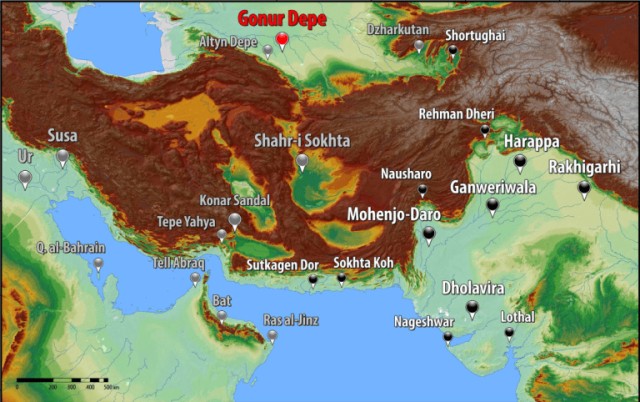
The Chalcolithic & Bronze Age civilizations geographically closest
to the Harappan or the Saraswati-Sindhu civilization were the twin
Eastern Iranian civilizations of Helmand and Halil Rud/Jiroft and
the Central Asian civilization of BMAC (Bactria–Margiana Archaeological
Complex) spread over the southern margins of Turkmenistan &
Uzbekistan and as far east as Tajikistan.
We have discussed the genetic evidence which showed profound Harappan
influence in Helmand and BMAC while the aDNA from Halil Rud civilization,
situated in the Kerman province of modern Iran, further west of
Shahr-i-Sokhta, remains to be sequenced and published.
After having had a look at the genetic data that supports an Out
of India migration into these adjacent regions of Eastern Iran &
Central Asia, it would be in the fitness of things to also have
a brief encounter with the archaeological evidence that can prop
up the above said genetic evidence.
The archaeological data is much varied and quite interesting. However
there is a lot more to learn and perhaps we have so far just scratched
the surface.
Helmand
and Halil Rud :
The twin civilizations of Helmand
and Halil Rud, situated to the west of the Harappan civilization,
were not known until a few decades ago and even today we know very
little about them. In many ways, we know even less about them than
what we know about the Harappan civilization itself.
From what we know it is fairly clear that both of these Eastern
Iranian civilizations preceded by several centuries the BMAC civilization
and were roughly contemporaneous with the Harappan civilization.
All of these southern civilizations, including the Harappan, are
in turn considered to have played a defining role in the formation
of the BMAC, a proposition which has been confirmed by ancient DNA
evidence.
Both the Helmand civilization and its western neighbour, the Halil
Rud civilization were intimately in contact with their geographically
massive eastern neighbouring civilization of the Harappans.
In order to avoid an unduly long post, I shall limit myself over
here to the very intriguing linkages of Harappans with the Helmand
civilization only.
Helmand
and Harappan :
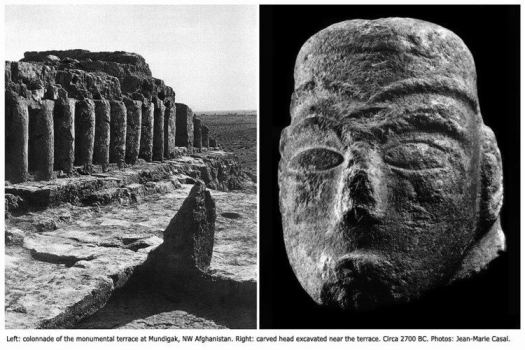
Mundigak, Afghanistan
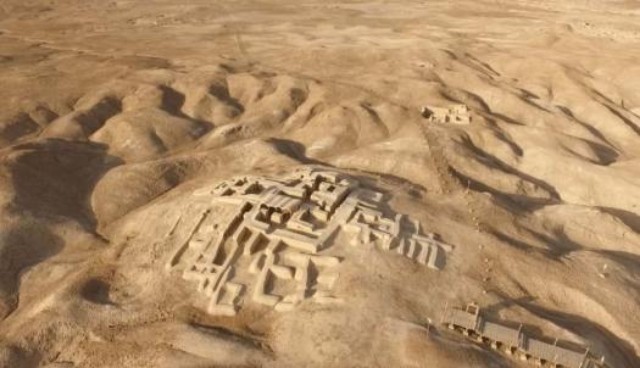
Burnt
Building, Shahr-i-Sokhta
The Helmand civilization centred on the river Helmand which flows
from Afghanistan into Sistan province of Eastern Iran. We know atleast
two of its major sites – Mundigak in Afghanistan and Shahr-i-Sokhta
in eastern Iran.
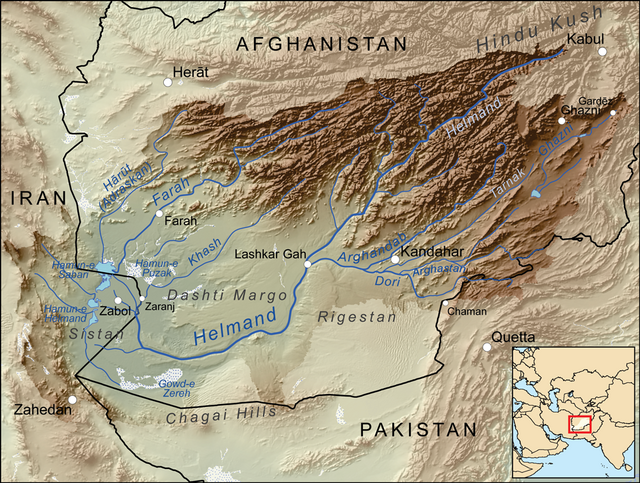
Helmand
River
The genetic evidence from Shahr-i-Sokhta, the biggest Helmand site,
confirms that the relations with the Harappans were quite strong
with nearly half of all ancient samples from that site considered
to have been migrants from the Harappan region, especially from
Baluchistan and the rest of the ancient samples showing admixture
from these migrants.
According to the French archaeologist, Jean Francois Jarrige, the
principle excavator of Mehrgarh, as stated in this article, the
foundation of Mundigak, the other Helmand site, can be interpreted
as the settling of people from Baluchistan of the Mehrgarh Chalcolithic
tradition and the remains of Period I at Mundigak fit almost perfectly
the cultural assemblage of Mehrgarh Period III.
It is also significant that the pottery of Mundigak I, the earliest
occupation of the “Helmand” cultural complex, corresponds
to the Mehrgarh III pottery, in technique—quality of the paste
and manufacture— as well in the shapes and decoration, probably
within a phase dated to the end of the 5th millennium. The pottery
of Mundigak I-II (fi g. 2: 3-5, 7-8) can also be related to the
context of Balochistan ceramic productions, especially from Mehrgarh
IV around 3500 BC.
The foundation of Mundigak, incidentally dates to around 5000 BC
and is therefore significantly older to the foundation of Shahr-i-Sokhta,
its sister site in Helmand more than 400 kms to its west, whose
earliest dates go only upto 3300 BC and where we have already seen
that the Harappan or Baluchistani migrants were already present
from the earliest period.
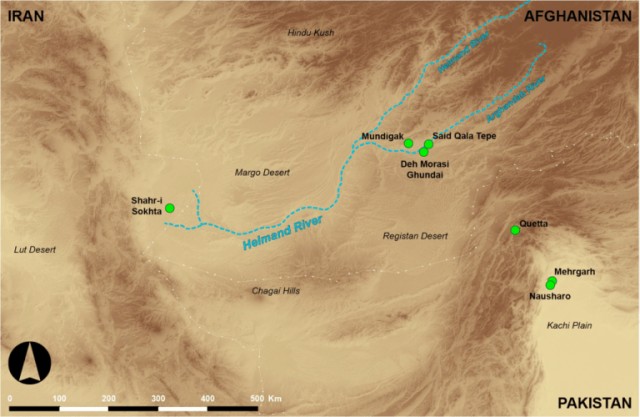
While , “..there is general agreement that Shahr-i Sokhta
and Mundigak have the same material culture including similar buff
ceramic material, validating the existence of a Helmand Valley archaeological
culture at the time corresponding to Period I at the former and
Period III at the latter…” it also needs to be understood
that “Shahr-i-Sokhta I nonetheless has inter-regional connections
that are not recorded at Mundigak. In particular, a series of objects
point to contacts to the west…”
With regard to Shahr-i-Sokhta, which in its most expansive phase
was atleast around 150 hect. it should be noted that “…Shahr-i-Sokhta
I is the foundation period of this site and that no other site (or
no context at this site) has been observed thus far in Seistan with
older archaeological deposits. Since no evidence for an older settlement
is observed in this region, the most rational reconstruction is
that Shahr-i Sokhta was founded by communities coming from (an)other
area(s) in the late fourth millennium BCE.” (link same as
above).
An important provenance study of the Shahr-i-Sokhta ceramics also
indicated a strong influence from the west from the Baluchistani
region and Mundigak. Almost all of the deluxe pottery that was found
at the site and associated with elite graves was of non-local origin
and were imports from the Iranian and Pakistani Baluchistan region.
The authors of this study also observe, “The possibility indeed
remains that, for instance, the cultural assemblage at Mundigak,
or a part of it, belonged to people who later moved to Shahr-i-Sokhta.”
We have already noted earlier how, Mundigak itself likely derives
from the Mehrgarh Chalcolithic tradition of Pakistani Baluchistan.
This tradition, also known as Damb Sadat or Quetta pottery tradition
is one of the 4 major early pottery traditions of Early Harappans.
The strong eastern provenance of the Helmand civilization can be
further appreciated when we see the following material and non-material
connections with the Harappan civilization.
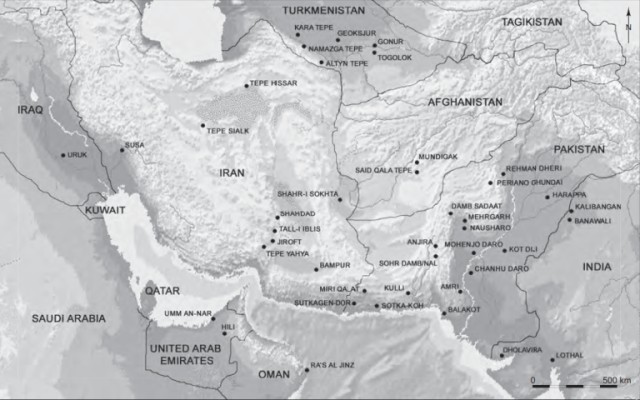
Ceramics :
The cermaics from Shahr-i-Sokhta show similarities with more than
1 type of ceramic traditions of the Early Harappans. There are similarities
with the Quetta or Damb Sadat pottery tradition and infact the earlier
Helmand site of Mundigak is even considered by some as part of that
early Harappan Quetta tradition and established by migrants from
people of the Chalcolithic Mehrgarh tradition, as already noted.
Besides, there is a Southern Baluchistan pottery tradition known
as the Nal which is part of the Amri-Nal culture with Amri tradition
extending into Sindh and Northern Gujarat. This Nal pottery is also
quite prominent at Shahr-i-Sokhta. Finally, there are also some
pottery samples which have been considered to be of the Kot Diji
tradition, an early Harappan culture of Greater Punjab region and
thus from the very heart of the Harappan culture.
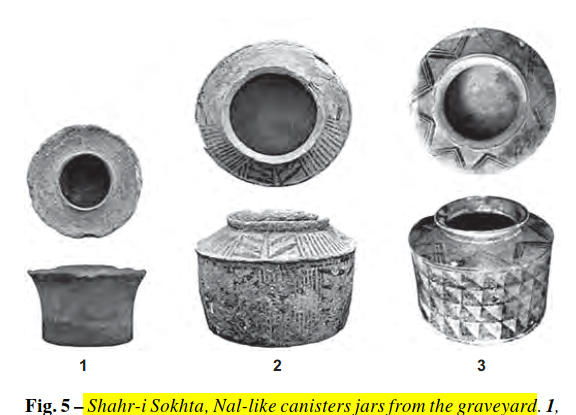
A motif found on the potteries at Shahr-i-Sokhta is the pipal leaf
motif. According to archaeologists Vidale and colleagues,
Pipal leaves are a distinctive motif of the pre-Indus ceramic complexes
across wide regions of the Subcontinent; they become very common
in the Kot Dijian phase (approximately 2800-2600 BCE), and often
appear on the famous verres ballon of the Helmand civilization.
The variant with the symmetrical swirling elements is well-known
at Kalibangan, in Haryana, where it occurs in different versions,
painted or incised in a plastic state. Besides such a possible link
with Kalibangan and Haryana, similar sherds are reported from an
enormous region, stretching from Kech Makran, Period IIIb (about
2800-2600 BCE) to Mundigak.
The
‘Priest-King’ :
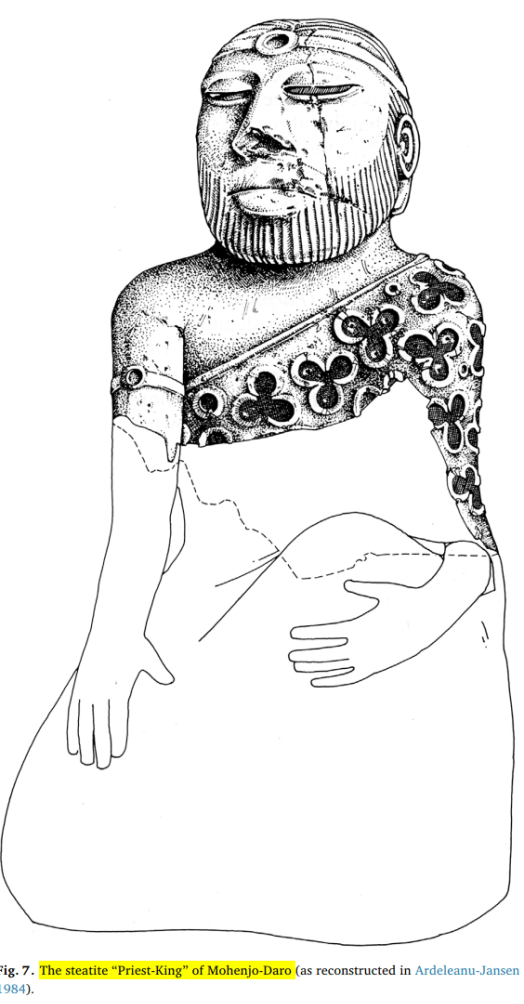
This type of figurine and its fragments, long considered as a Harappan
artifact, is not just limited to the Harappan zone where it is found
at Mohenjo-Daro and Dholavira but also at Helmand sites of Mundigak
and Shahr-i-Sokhta and also in BMAC at Gonur (reference).
Since this figurine (figurine : a statuette, especially one of a
human form) likely gives a very important insight into the socio-cultural
and religious aspects of the people to whom it belonged, the fact
that it was not limited to the Harappan region but was also present
in Eastern Iran and Central Asia further supports the argument of
shared socio-cultural and religious beliefs and values among the
people of these civilizations in the Bronze Age.
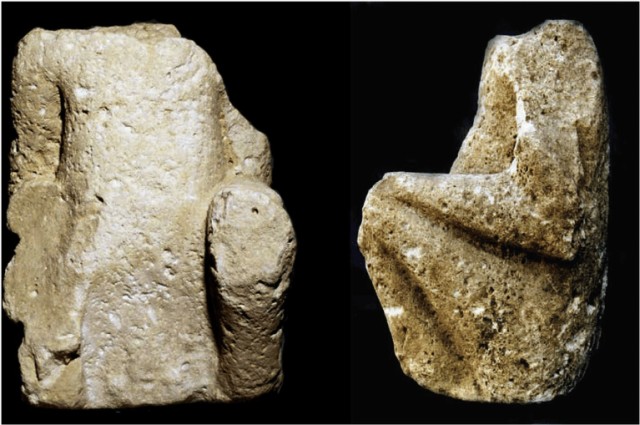
Priest-King figurine from Dholavira
Zhob-like
Figurines :
Connected with similar figurines found during the Kot Dijian phase
in Northern Baluchistan.
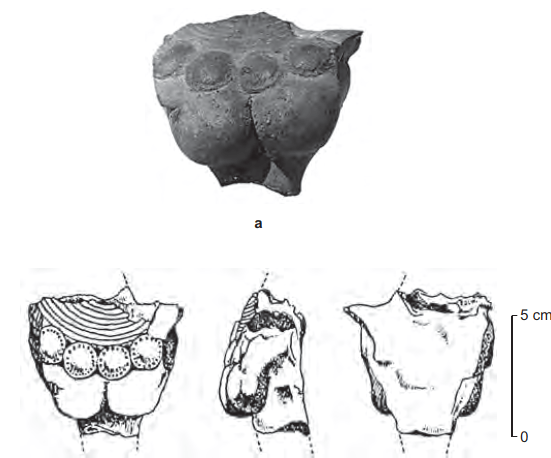
Terracota
Cakes :
“… Shahr-i Sokhta is the only site in the eastern Iranian
plateau where such terracotta cakes, triangular or more rarely rectangular,
are found in great quantity. Their use, perhaps by families or individuals
having special ties with the Indus region…The most important
group of incised terracotta cakes comes from Lothal, where the record
includes specimens with vertical strokes, central depressions, a
V-shaped sign, a triangle, and a cross-like sign identical to those
found at Shahr-i Sokhta.”
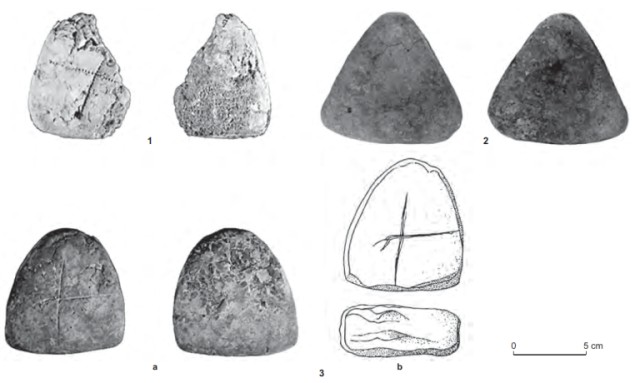
Stamp
Seals :
Stamp seals found at Shahr-i-Sokhta are found all across the Harappan
horizon including in its eastern sphere at several sites in Haryana
such as Bhiranna & Banawali.
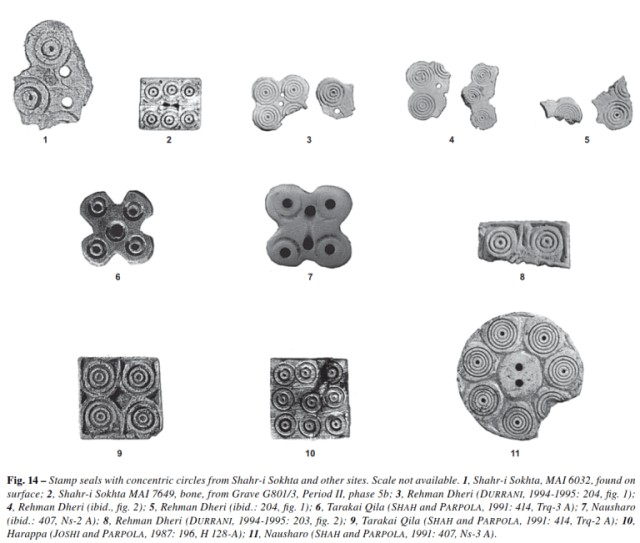
Steatite
Disk Beads :
“The beads found at Shahr-i Sokhta, in contrast (taken from
the collection in CCXV, cut 3), were morphologically identical to
the Indus specimens; the chemical characterization showed minor
variations from the Indus beads…fi-red steatite disk beads
could have been locally produced at Shahr-i Sokhta with a distinctively
Indus technique. ”
” Etched carnelian beads, another indicator of Indus trade
and exchange activities, are reported from Mundigak. A possible
ivory bead was reported at Shahr-i Sokhta...”
Mouse-Traps
:
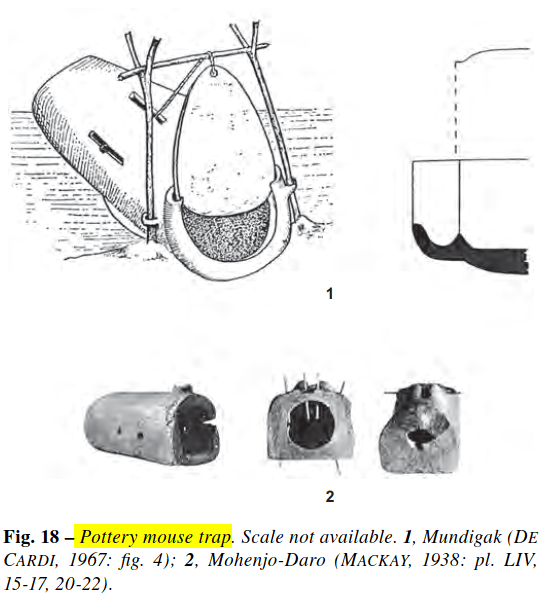
“… the overall similarity of the ceramic containers
suggests a parallel adaptation, based upon shared know-how, for
coping with common problems of rodent infestations in the “domestic
universes” of the two civilizations.”
Gaming
pieces, dice and gaming boards :
This was something spread across a wider region and included even
Mesopotamia.
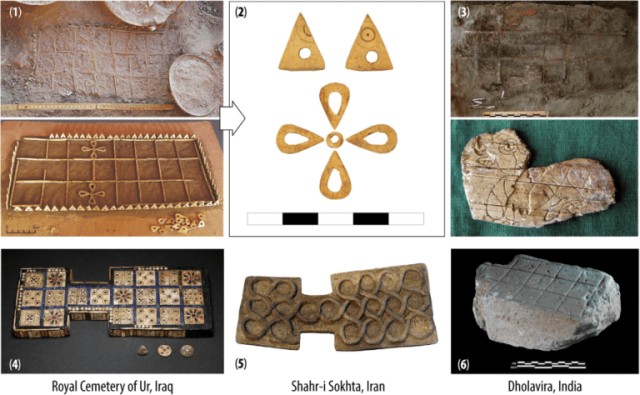
Houses
:
The architecture of Shahr-i-Sokhta is not very well understood but
from what little we know, it appears that the planning of the houses
mirrored those of the Harappans.
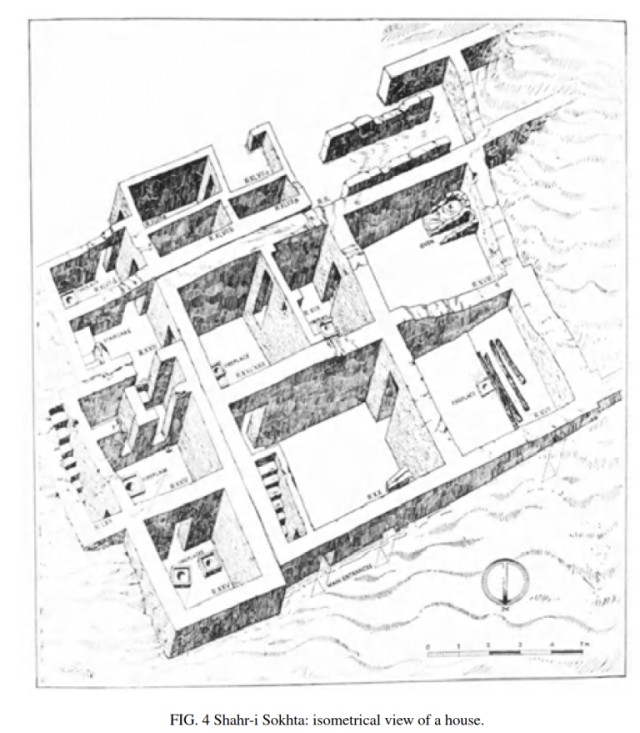
The third millennium b.c. dwellings consisted of mud-brick buildings
formed by rather asymmetrical groups of square rooms. The basic
ground-plan was rectangular in shape and covered an area of 90–150
sq m laid out around a courtyard from which the only door providing
access to the exterior opened towards the east…At Shahr-i
Sokhta access to the ground floor was through the external wall
or from one side of the internal courtyard.
Compare the above description with the description of the typical
Harappan house,
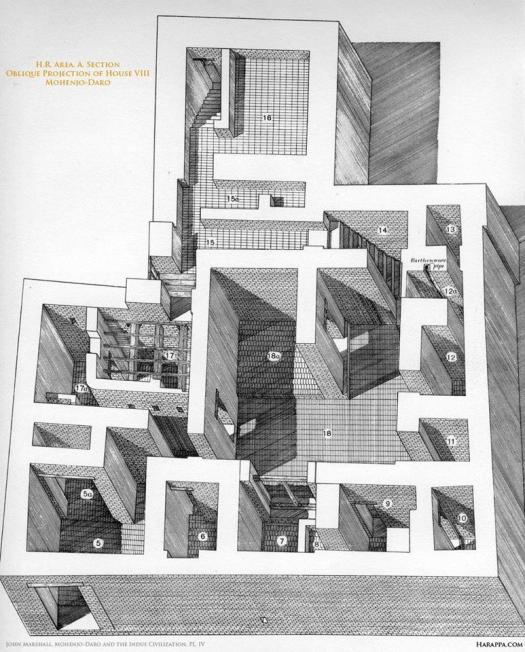
Houses range from 1-2 stories in height, with a central courtyard
around which the rooms are arranged…Stairs led to the upper
stories through a side room or the courtyard…
Burials
:
The burials at Shahr-i-Sokhta mostly consisted of simple burial
pits but it also consisted of brick lined graves.
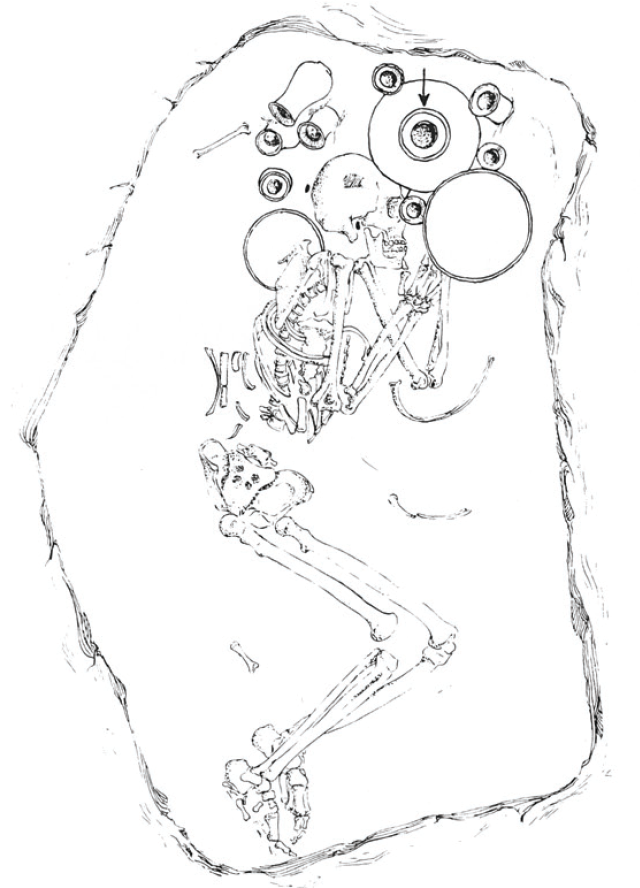
A pit burial from Shahr-i-Sokhta
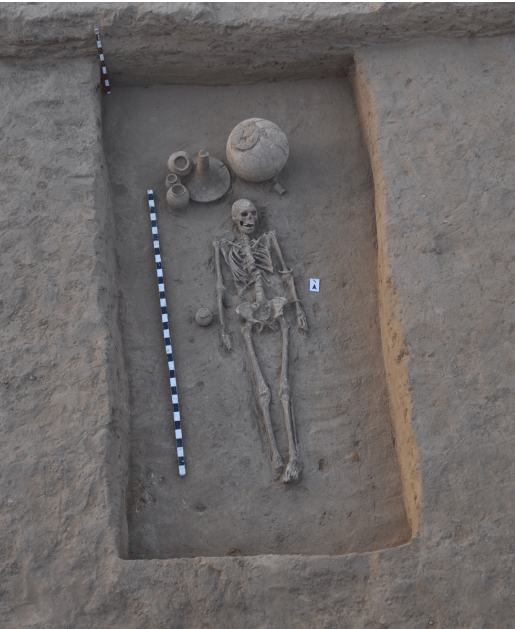
Typical pit burial from Rakhigarhi
Pit Burials and Brick lined graves are also a feature of Harappan
burials. Most Burials at Harappan sites are oriented North
or northwest. Although, the orientation of Shahr-i-Sokhta
burials is not clear, the burials from the Necropolis of Gonur in
BMAC, which is said to be majorly influenced by Shahr-i-Sokhta,
show a North to Northwest orientation. So a similar burial orientation
at Shahr-i-Sokhta is quite possible.
Another burial practice that the Harappans shared with the people
of the Helmand civilization is the Cenotaph or the symbolic burials
which consisted of an empty burial filled with burial offerings
but devoid of any human remains.

A cenotaph burial from Gonur
Such a peculiar type of burial was found among a small percentage
of burials at Shahr-i-Sokhta and at the site of Gonur in BMAC as
well as across most of the Harappan sites. At Dholavira, for example,
the Cenotaph burial features prominently.
Zebu
Cattle :

A review of the animal remains found at Shahr-i-Sokhta indicates
that while sheep and goats consituted the majority of domestic animals,
cattle consituted the next big number and that among the cattle,
the Zebu clearly predominates.
Based on the animal remains as well as the cattle figurines, 3/4th
of which were of Zebu, it appears the dominant form of cattle at
Shahr-i-Sokhta was of the Zebu type, further confirming the strong
eastern provenance of this major Helmand site.
The above brief review should make it clear that the links between
the Helmand civilization and the Harappan is quite substantial and
fully corroborates the major presence of Eastern migrants as deduced
by the ancient DNA samples from Shahr-i-Sokhta.
Saraswati
and Helmand :
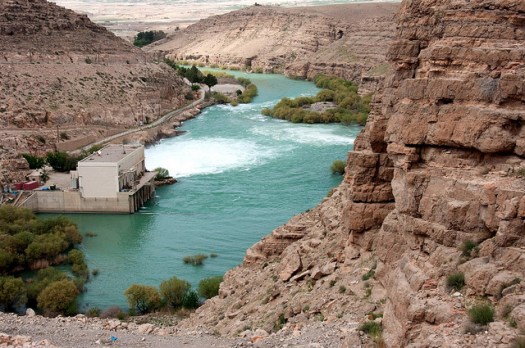
The Helmand river
It may be pertinent to note here that the ancient Saraswati river
of the Rig-ved has been identified with this very same Helmand river
rather than the more natural identification with the Ghaggar-Hakra
by some Indologists. Their contention is that the incoming Indo-Aryans
first settled on the Helmand river in Afghanistan whom they named
as Saraswati. This is based on the argument that the Avestan Harahvaiti,
whom they say is none other than Helmand, is the exact cognate of
Rigvedic Saraswati. Hence, in a Aryan Migration model this very
same Helmand river was also the Rigvedic Saraswati.
However, no archaeological evidence to support such west to east
movement has been presented.
On the other hand, some scholars have argued, on more reasonable
grounds, that the movement of people appears to have been from East
to West, based on Rigvedic and Avestan evidence. There was civilization
in the core Harappan regions of Greater Punjab, Rajasthan, Haryana
and Western UP which parallels the early Vedic geography. Similarly,
there was a civilization on the Helmand river closely related to
the Harappan civilization, which mimics Avestan geography. And the
balance of evidence, as presented here and in the previous post,
clearly indicates migration from the Harappan zone into the Helmand
basin.
Could this archaeological and genetic phenomenon be related to the
migration of early Iranians westwards after their separation from
the early Vedic people ? And might this be how, the name of Vedic
Saraswati, on the dried up bed of which majority of Harappan settlements
now stand, was transposed by the migrating Iranians onto the Helmand
river ? Most assuredly, this is a far more sound argument that what
the invasionists have been able to muster.
It may also be noted that in the Rigved, the camel is an exotic
animal and is mostly associated with the Iranian kings who bring
it as a gift to the Indo-Aryan Purus. Camel is also said to have
played a major role in the economic and social life of the Andronovo
cultural horizon also associated with Indo-Iranians. The latest
archaeological and genetic data shows that the earliest evidence
of camel domestication comes from Eastern Iran and SW Central Asia
from where it most likely spread across Central Asia and the steppe.
The
Importance of Shahr-I-Sokhta :
Shahr-i-Sokhta as a site shows us several features which can an
decisively help us in identifying the place of origin of the Indo-Europeans,
a subject that remains quite contentious to this day.
According to a widely accepted proto-Indo-European reconstruction
the word for wool is said to have been known to the PIE people before
their separation and hence they are believed to have been rearing
sheep for wool. The earliest archaeological evidence of woollen
textiles anywhere across Eurasia is found at none other than the
site of Shahr-i-Sokhta.
Wine-making is also said to have been known to Proto-Indo-Europeans
and it is also attested at Shahr-i-Sokhta.
One of the burial types found at Shahr-i-Sokhta which becomes very
common in the BMAC domain is the catacomb burial.
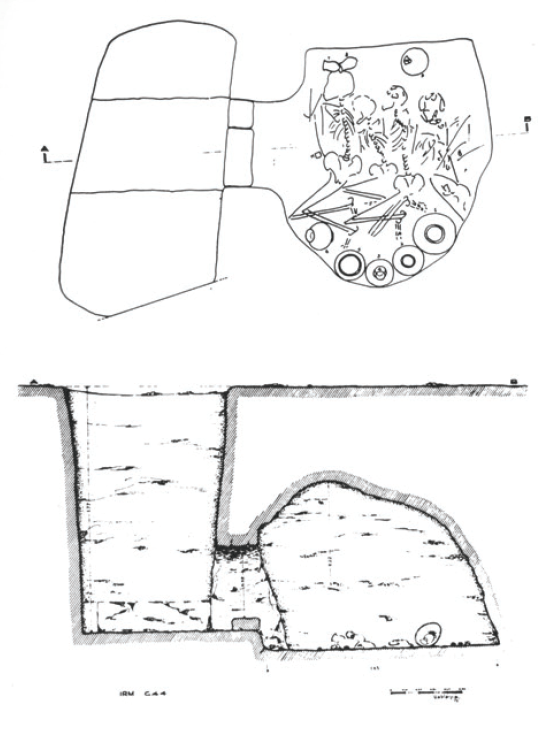
Schematic of a catacomb burial from Shahr-i-Sokhta
Quite pertinently, one of the successor cultures of the Yamnaya
on the steppe is the culture known as the Catacomb culture which
is considered by some European archaeologists as Indo-Iranian. The
Yamnaya culture is also amazingly enough also known as the Pit-Grave
culture.
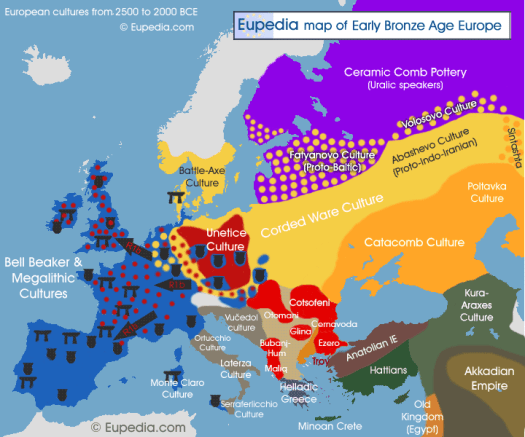
This steppe catacomb culture’s origins are likely later than
the earliest catacomb burials found at Shahr-i-Sokhta itself.
Infact, archaeologists had already noted decades back that,
A more complex type of grave has a pit opening into an underground
chamber dug in the clay. At Shahr-i Sokhta it has been found to
have been used for multiple burials accompanied by richer grave
goods. The shape closely recalls that of the later catacomb graves
of southern Siberia and Soviet Central Asia, though it is too early
to say whether there is a common ideological background behind this
convergence.
If the catacomb culture of the steppe was Indo-Iranian, it certainly
needs explaining as to who the people in Eastern Iran and Central
Asia during the Bronze Age were that were also practicing the catacomb
burial.
Source
:
http://bharatkalyan97.blogspot.com/
2019/11/archaeological-evidence-
for-oit-part-i.html






















